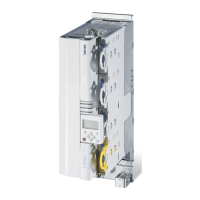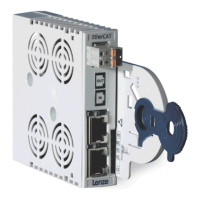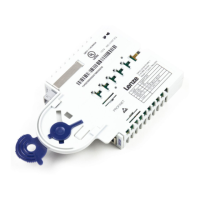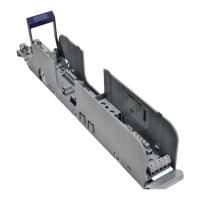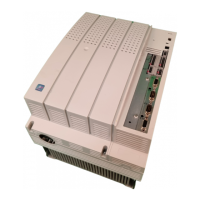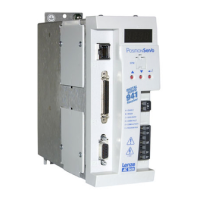



Do you have a question about the Lenze L-force 9400 Series and is the answer not in the manual?
Records changes made to the document over time, including version numbers and dates.
Explains symbols, formatting, and terminology used throughout the manual for clarity.
Defines key terms, acronyms, and abbreviations specific to the product and its operation.
Details signal words and symbols used to indicate safety warnings and important information.
Outlines fundamental safety measures and application guidelines for the product.
Details safety precautions specific to the device and its intended use.
Identifies potential dangers that may remain even after safety measures are implemented.
Specifies the intended use and limitations of the communication module.
Explains how to identify the module and its versions from the nameplate.
Lists the key functionalities and capabilities of the Ethernet communication module.
Describes the physical connections, ports, and indicators on the module.
Provides specifications for the module's general operation and environmental conditions.
Details electrical insulation requirements and associated safety measures for protection.
Shows the physical size and measurements of the communication module.
Covers the physical mounting and assembly procedures for installing the module.
Details the wiring and electrical connection requirements for the module.
Describes preparatory checks before powering up the system for the first time.
Guides through setting network parameters like IP address, subnet mask, and gateway.
Explains how to use DHCP to automatically obtain IP settings for the module.
Defines the network address required for device communication over Ethernet.
Specifies how the IP address is divided into network and host portions.
Sets the address for routing traffic outside the local network to the module.
Displays the unique hardware identifier assigned to the Ethernet interface.
Describes how the module obtains IP addresses automatically via DHCP.
Covers the steps and considerations for the first power-up of the system.
Details the format and fields of the GCI communication telegram used for data transfer.
Explains the process for retrieving parameter values from the controller via telegrams.
Explains the process for setting parameter values on the controller via telegrams.
Defines the structure and data types for user data transfer areas in telegrams.
Describes scenarios and procedures for interrupting or aborting data transmissions.
Lists and defines error codes encountered during parameter data transfer operations.
Provides practical examples of communication telegrams for specific operations like reading/writing.
Explains the meaning of status indicator LEDs on the module for troubleshooting.
Guides on how to access and interpret error messages for the base Servo Drive 9400.
Lists communication-related parameters of the base Servo Drive 9400.
Details parameters specific to the Ethernet module installed in slot MXI1.
Details parameters specific to the Ethernet module installed in slot MXI2.
Provides a reference for parameter attributes like code, index, data type, and access rights.
Records changes made to the document over time, including version numbers and dates.
Explains symbols, formatting, and terminology used throughout the manual for clarity.
Defines key terms, acronyms, and abbreviations specific to the product and its operation.
Details signal words and symbols used to indicate safety warnings and important information.
Outlines fundamental safety measures and application guidelines for the product.
Details safety precautions specific to the device and its intended use.
Identifies potential dangers that may remain even after safety measures are implemented.
Specifies the intended use and limitations of the communication module.
Explains how to identify the module and its versions from the nameplate.
Lists the key functionalities and capabilities of the Ethernet communication module.
Describes the physical connections, ports, and indicators on the module.
Provides specifications for the module's general operation and environmental conditions.
Details electrical insulation requirements and associated safety measures for protection.
Shows the physical size and measurements of the communication module.
Covers the physical mounting and assembly procedures for installing the module.
Details the wiring and electrical connection requirements for the module.
Describes preparatory checks before powering up the system for the first time.
Guides through setting network parameters like IP address, subnet mask, and gateway.
Explains how to use DHCP to automatically obtain IP settings for the module.
Defines the network address required for device communication over Ethernet.
Specifies how the IP address is divided into network and host portions.
Sets the address for routing traffic outside the local network to the module.
Displays the unique hardware identifier assigned to the Ethernet interface.
Describes how the module obtains IP addresses automatically via DHCP.
Covers the steps and considerations for the first power-up of the system.
Details the format and fields of the GCI communication telegram used for data transfer.
Explains the process for retrieving parameter values from the controller via telegrams.
Explains the process for setting parameter values on the controller via telegrams.
Defines the structure and data types for user data transfer areas in telegrams.
Describes scenarios and procedures for interrupting or aborting data transmissions.
Lists and defines error codes encountered during parameter data transfer operations.
Provides practical examples of communication telegrams for specific operations like reading/writing.
Explains the meaning of status indicator LEDs on the module for troubleshooting.
Guides on how to access and interpret error messages for the base Servo Drive 9400.
Lists communication-related parameters of the base Servo Drive 9400.
Details parameters specific to the Ethernet module installed in slot MXI1.
Details parameters specific to the Ethernet module installed in slot MXI2.
Provides a reference for parameter attributes like code, index, data type, and access rights.
| Category | Servo Drives |
|---|---|
| Protection Class | IP20 |
| Communication | CANopen, PROFIBUS, PROFINET |
| Safety | STO (Safe Torque Off) |
| Control modes | torque control, position control |
| Operating Temperature | 0°C to +45°C (without derating) |

